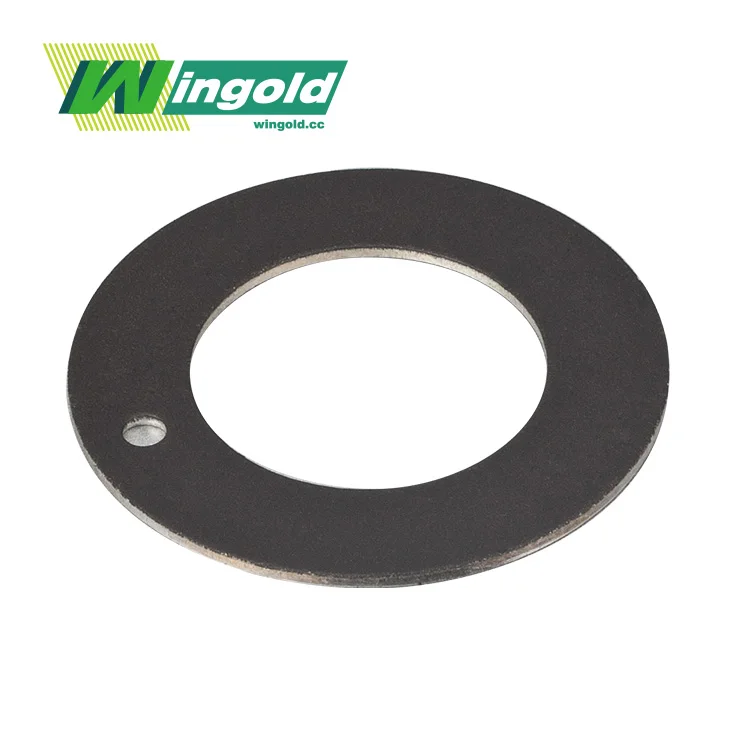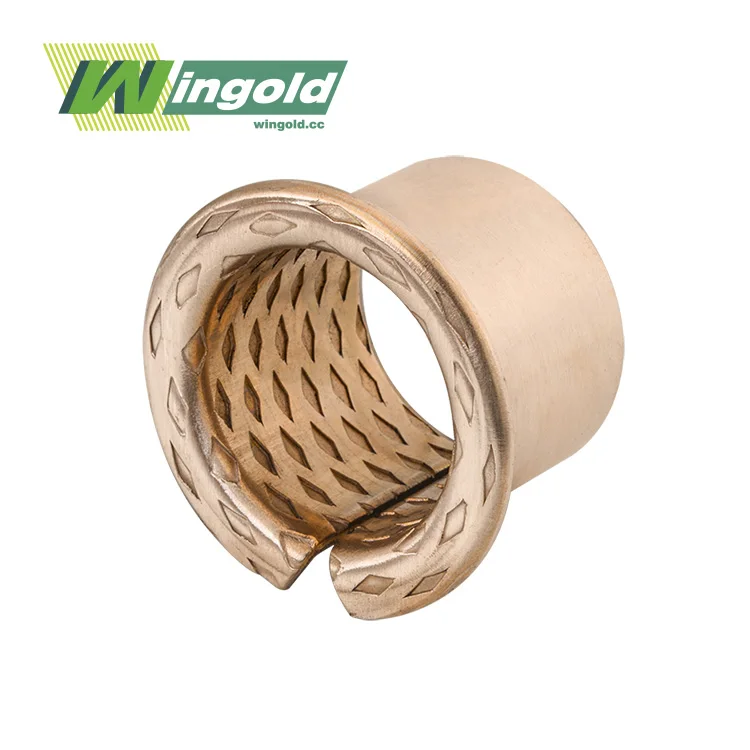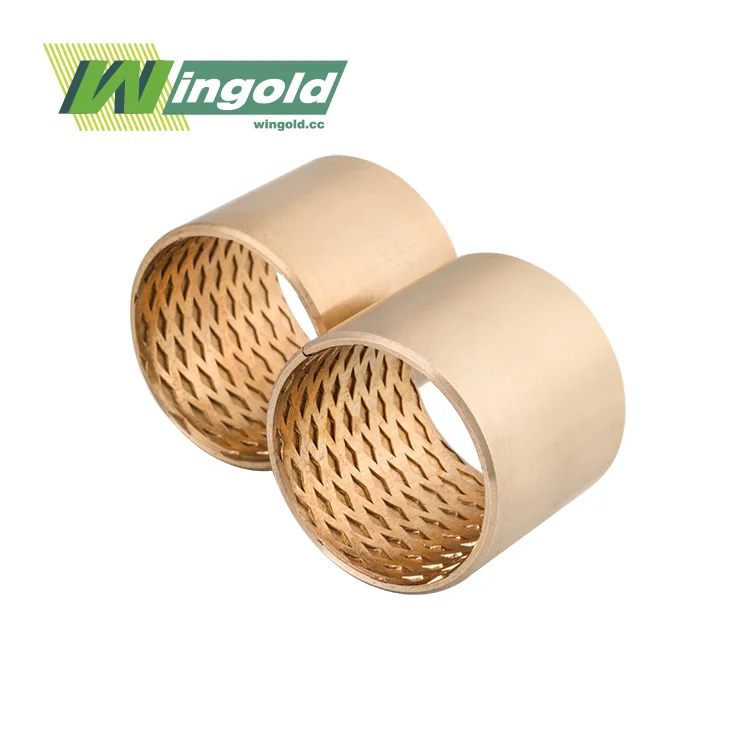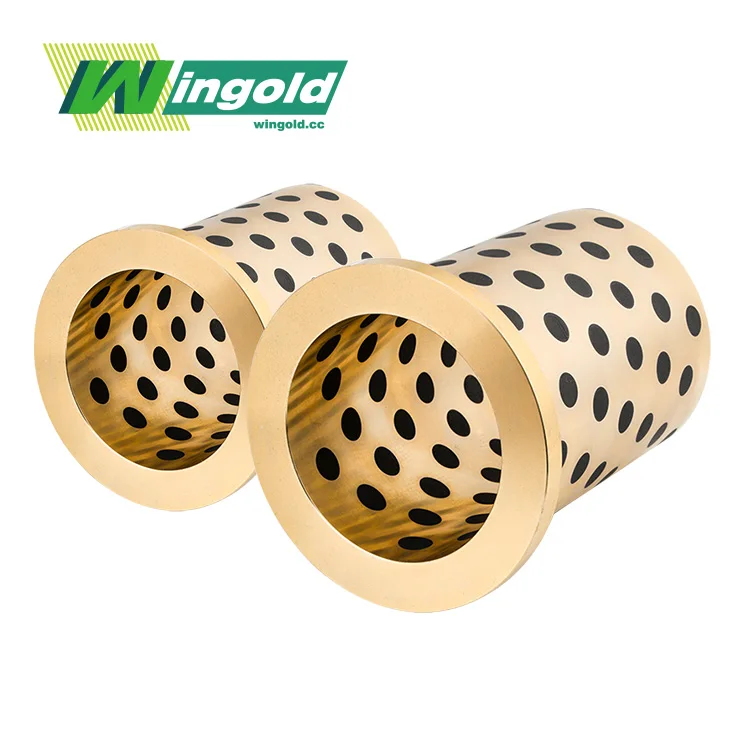
The Engineering Marvel of Bimetallic Bushing Sleeves
Composition and Structure
At the heart of a bimetallic bushing sleeve lies a fastidiously designed structure that combines the qualities of two unmistakable materials. The center is ordinarily composed of high-quality, low-carbon steel, chosen for its great mechanical quality and load-bearing capability. This steel base guarantees auxiliary keenness beneath requesting conditions. It is overlaid with a sintered layer of copper amalgams or other processed materials, optimized for contact decrease and warm conductivity in high-performance applications.
Common copper alloys used in bimetallic bushing sleeves include CuPb10Sn10, CuPb6Sn6Zn3, CuPb24Sn4, and CuPb30, all renowned for their exceptional low-friction characteristics. These materials significantly reduce wear and energy loss, enhancing operational efficiency and extending service life. For specialized applications, alternative alloys like aluminum-tin (e.g., AlSn20Cu) or nickel-enriched bronzes such as CuSn8Ni are used. These variants offer tailored properties to withstand specific load, speed, or environmental demands in complex machinery.
Manufacturing Process
The production of bimetallic bushing sleeves involves a sophisticated manufacturing process that ensures optimal bonding between the steel backing and the wear-resistant layer. This process typically includes:
- Precision machining of the steel backing
- Application of the copper alloy or specialized material
- Sintering to create a strong metallurgical bond
- Secondary sintering and extrusion for enhanced bonding strength
- Final machining to achieve desired dimensions and surface features
This meticulous process results in a bimetallic bushing sleeve with superior load-bearing capacity and excellent wear resistance, capable of withstanding the rigors of demanding industrial applications.
Enhancing Equipment Performance with Bimetallic Bushings
Superior Load Capacity
One of the primary advantages of bimetallic bushing sleeves is their exceptional load-bearing capacity and long-term dimensional stability under extreme pressures. The steel backing provides a robust foundation that can withstand high loads without deformation, while the sintered alloy layer offers low-friction performance, reducing wear over time. This combination allows for load capacities of up to 250 MPa, making these components ideal for heavy-duty applications in sectors such as automotive, aerospace, and industrial machinery.
Thermal Management and Dimensional Stability
Bimetallic bushing sleeves excel in thermal management, a critical factor in maintaining equipment performance under varying operating conditions. The steel backing acts as an efficient heat conductor, while the alloy layer provides a low-friction surface that minimizes heat generation. This synergy results in improved dimensional stability, reduced thermal expansion, and consistent performance across a wide temperature range, typically from -40°C to 280°C.
Customization and Versatility
Bimetallic bushing sleeves offer remarkable versatility through customization options. Manufacturers can tailor these components to meet specific application requirements by adjusting dimensions, material compositions, and surface features. For instance, the surface of the copper alloy layer can be processed to include various types of oil grooves, oil holes, and other lubrication features. This adaptability makes bimetallic bushing sleeves suitable for a wide range of applications, including those where continuous lubrication is challenging or impractical.
Applications and Industries Benefiting from Bimetallic Bushings
Heavy Machinery and Construction Equipment
In the realm of heavy machinery and construction equipment, bimetallic bushing sleeves play a crucial role in enhancing performance and durability. These components are often found in articulation joints, hydraulic cylinders, and pivot points of excavators, bulldozers, and cranes. The high load capacity and wear resistance of bimetallic bushings contribute to extended equipment life and reduced maintenance intervals, ultimately improving productivity and reducing operational costs.
Automotive and Transportation
The automotive industry has embraced bimetallic bushing sleeves for their ability to improve vehicle performance and efficiency. These components are commonly used in engine mounts, suspension systems, and transmission assemblies. The low-friction properties of the bearing layer contribute to smoother operation and improved fuel efficiency, while the high load capacity ensures reliability in critical automotive applications.
Industrial Machinery and Manufacturing
Bimetallic bushing sleeves have found widespread use in various industrial machinery applications, including:
- Hydraulic and pneumatic systems
- Forging and pressing machine tools
- Plastic extrusion and injection molding equipment
- Textile machinery
- Food processing equipment
- Papermaking machinery
In these applications, the bimetallic construction offers a balanced combination of high load-bearing strength, excellent wear resistance, and effective thermal management—ensuring consistent production output, minimal downtime, and superior product quality.
Conclusion
Bimetallic bushing sleeves represent a significant advancement in bearing technology, offering unparalleled load capacity, wear resistance, and thermal management capabilities. As industries continue to push the boundaries of equipment performance, these innovative components play an increasingly vital role in enhancing efficiency, reducing maintenance costs, and extending machinery lifespan.
By combining the strength of steel with the low-friction properties of specialized alloys, bimetallic bushings are setting new standards for equipment reliability and performance across a wide range of applications. For more information about our bimetallic bushing sleeves and how they can boost the load capacity and performance of your equipment, please contact us at info@wingold.cc. Our team of experts is ready to help you find the perfect bearing solution for your specific needs.



